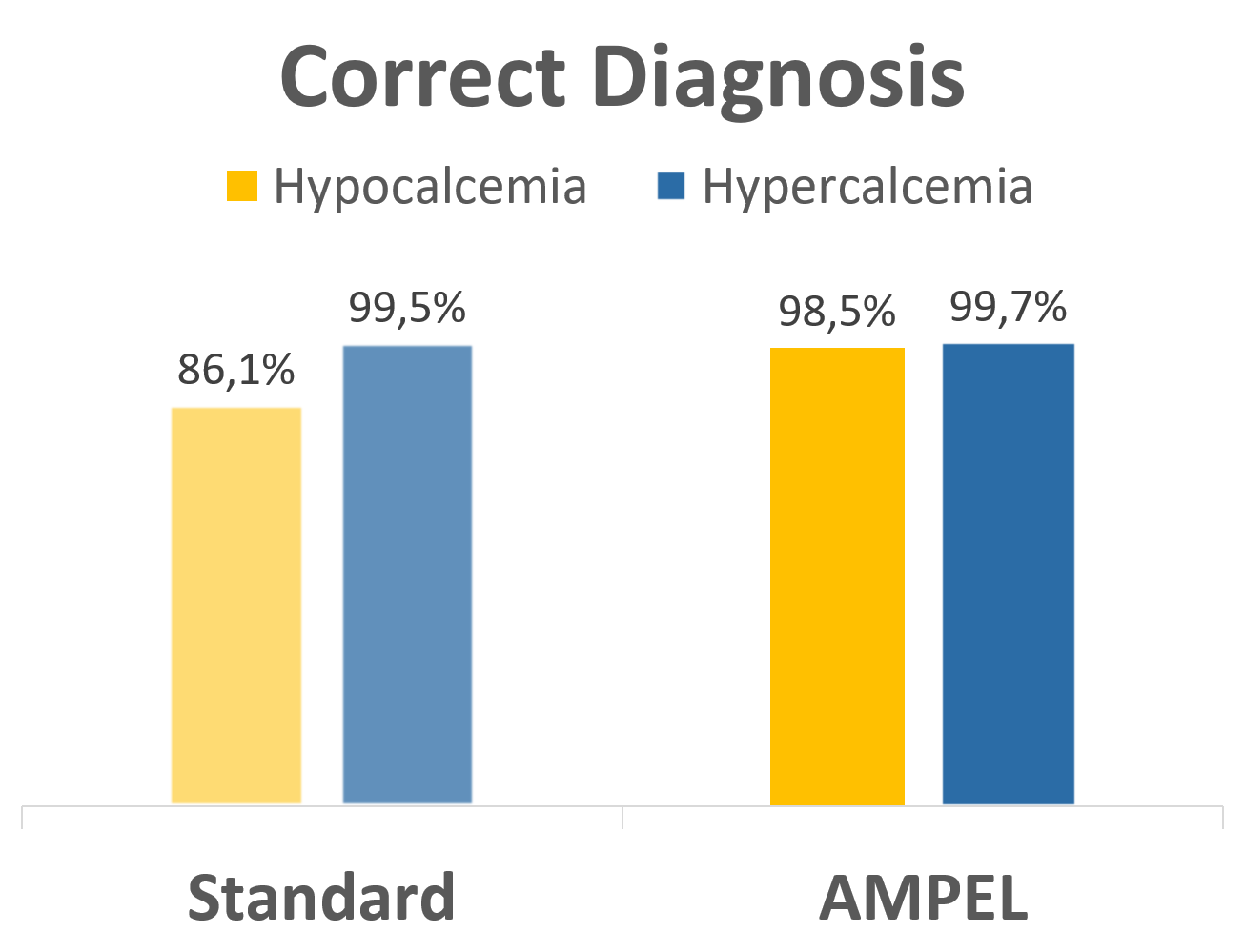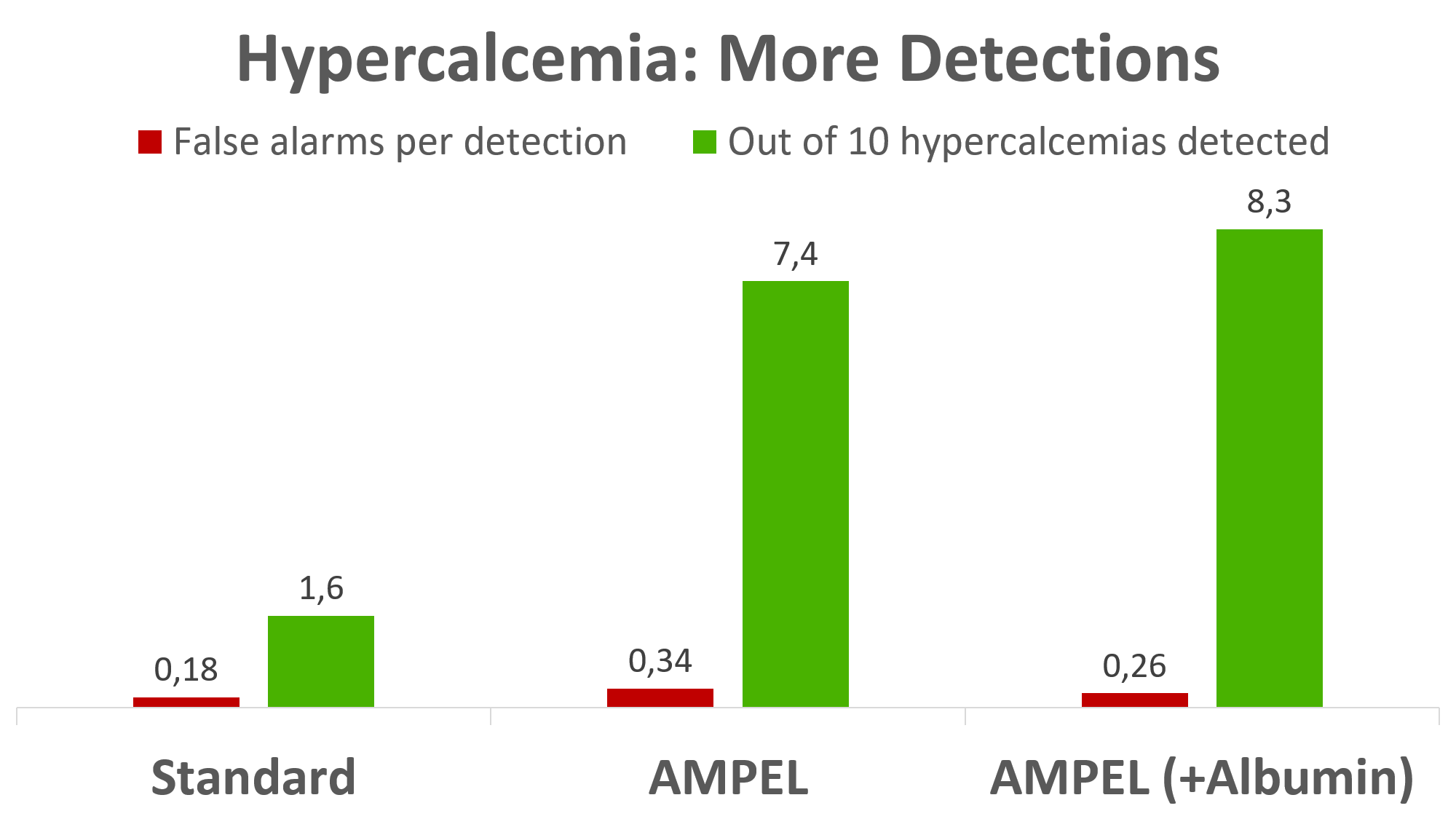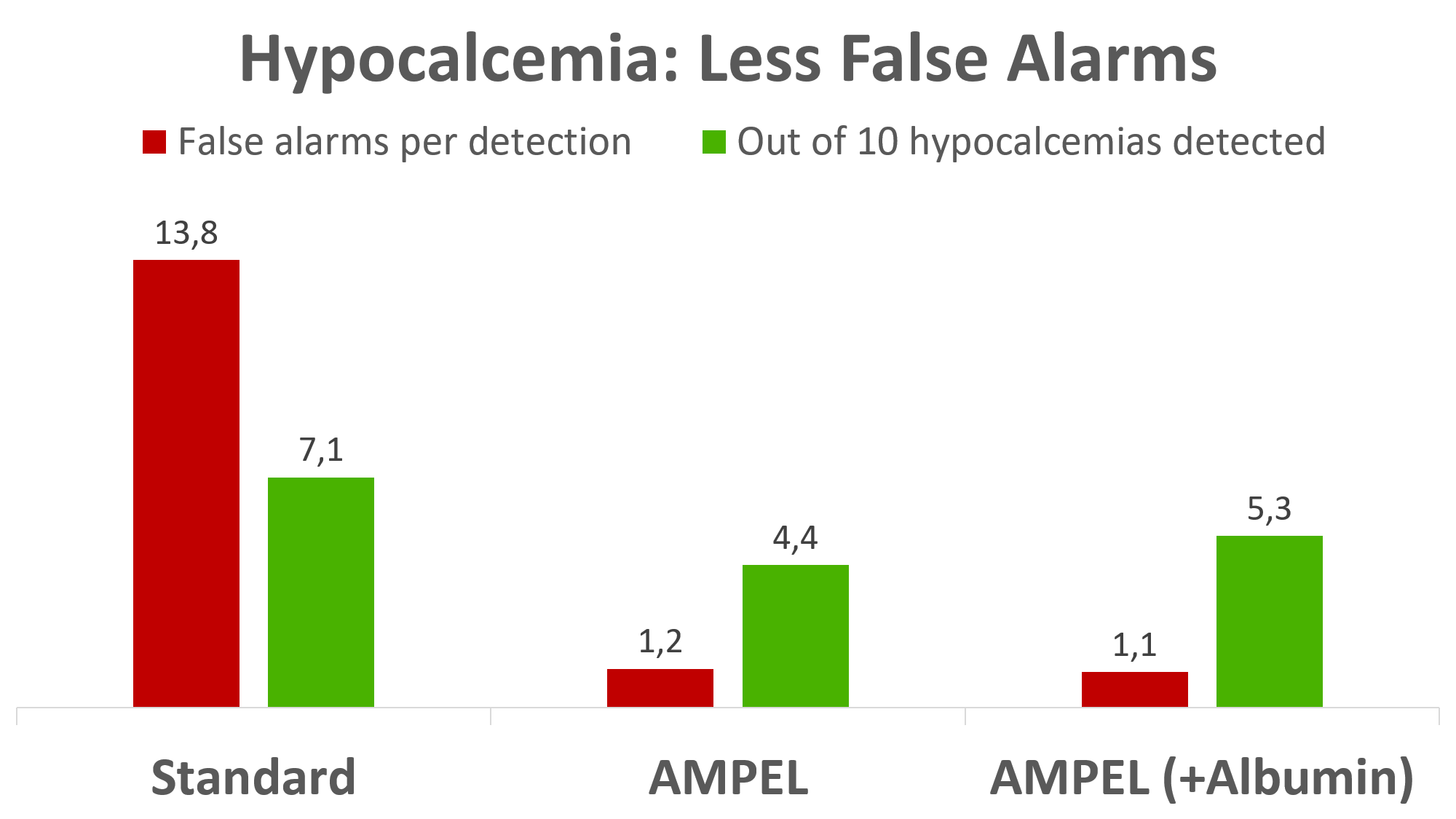Status: Randomized Study
Too much or too little calcium in the blood can have serious consequences. However, the initial symptoms of an imbalance are nonspecific. Special attention is therefore given to routine laboratory tests during a hospital stay.
About one-third of all patients experience hypercalcemia (too much calcium) or hypocalcemia (too little calcium) during their stay. The AMPEL ensures that no severe calcium imbalance is overlooked.

*Diagnosis of severe calcium imbalances through routine data (total calcium); Gold standard: ionized calcium from blood gas analyses
The challenge for automatic screening by the AMPEL is to:
1. Reach the largest possible number of patients.
2. Raise an alarm only when it provides added value to the hospital staff.
In laboratory medicine, there are various methods for measuring calcium. Normal calcium (total calcium) is determined as a standard in almost all blood samples. Unfortunately, it is not as accurate as the "gold standard", ionized calcium. This requires an additional blood draw (ABG) and is therefore determined much less frequently. To reach all patients and provide clinical added value, the AMPEL has found a way to enable automated monitoring without sacrificing quality.
 *Alerting for severe hypercalcemia through clinical routine data. Standard: total calcium; AMPEL: total calcium with site-specific cutoffs; AMPEL(+Albumin): adjusted calcium with site-specific albumin-corrected cutoffs; Gold standard: ionized calcium
*Alerting for severe hypercalcemia through clinical routine data. Standard: total calcium; AMPEL: total calcium with site-specific cutoffs; AMPEL(+Albumin): adjusted calcium with site-specific albumin-corrected cutoffs; Gold standard: ionized calcium
The Calcium AMPEL is mainly based on a very accurate and site-specific adjustment of alarm thresholds for normal calcium. But there's more: In the second step, there is a hospital-specific correction with albumin, another laboratory parameter that can be determined from the same blood sample.
In simple terms, the AMPEL is about ten times better at detecting severe calcium deficiency in routine data:
over a 5-year period retrospective analysis showed that it was able to reduce the number of misdiagnoses from 3562 to only 378.
 *Alerting for severe hypocalcemia through clinical routine data. Standard: total calcium; AMPEL: total calcium with site-specific cutoffs; AMPEL(+Albumin): adjusted calcium with site-specific albumin-corrected cutoffs; Gold standard: ionized calcium
*Alerting for severe hypocalcemia through clinical routine data. Standard: total calcium; AMPEL: total calcium with site-specific cutoffs; AMPEL(+Albumin): adjusted calcium with site-specific albumin-corrected cutoffs; Gold standard: ionized calcium
In everyday clinical practice, it is thus possible to use almost any laboratory test to automatically check for severe calcium imbalances. Whether patient safety benefits not only in theory but also in practice is currently being investigated in a study.
> Return to the "Models" overview
